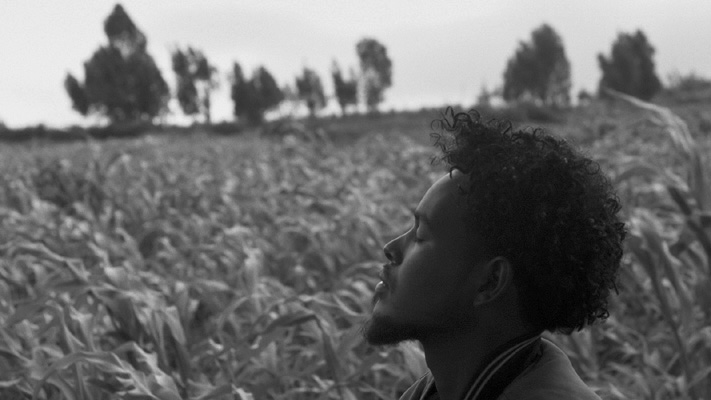An Overwhelming Journey in Search of Eternity
In her first feature film, Faya Dayi (2021), Jessica Beshir shows the impact of khat cultivation on the city of Harar in Ethiopia. Here Marla Jacarilla explains how this very personal film, ten years in the making, portrays the plant stimulation as a catalyst for hope, especially for its young people.
“The aroma of the coffee has changed, it doesn’t taste the same anymore. Our coffee used to be magnificent, but it took a lot of rain to make it grow. We’ve been replacing it with khat,” says one of the inhabitants of Harar, a city located in eastern Ethiopia. Indeed, khat, apart from its medicinal, religious, and spiritual uses, has become Ethiopia’s most lucrative business nowadays. Years ago, Harar was best known for its coffee plantations, but these have been progressively replaced by immense fields where khat is grown, a stimulant plant of hallucinogenic effects whose leaf is chewed and smoked by Sufi Muslims since, according to their tradition, it is the way to find the path to eternity.
The mother of the director Jessica Beshir is Mexican and her father is Ethiopian. Jessica grew up in Harar, but years later moved to Mexico. She wanted to be a doctor like her father but eventually ended up studying a critical studies program at UCLA. She settled in Brooklyn, but the need to return to her roots and regain contact with her hometown was the starting point for Faya Dayi, a film that took ten years to complete and has already been screened in festivals; such as the Sundance Film Festival, Seattle International Film Festival and Visions du Réel.
Beshir’s debut feature shows us the great social and economic impact that khat cultivation has had on the Harar community. In Faya Dayi, black and white images of immeasurable beauty show us a city plagued by poverty, unemployment, and discouragement: A city where time seems to pass in slow motion, a city in which religion, spirituality, and meditation are very present, but also frustration, lack of hope, and constant references to a corrupt government that neglects the most basic needs of the people.
The director creates an unhurried portrait of a community that resorts to the psychotropic effects of the khat leaf to escape from a reality they cannot change. The lack of economic alternatives makes almost all the inhabitants of the city depend on this plant, to a greater or lesser extent. Beshir avoids the common codes used in the most conventional documentaries and in so doing conveys a poetic approach to her hometown, using the atmospheric power of sound and dreamlike images to bring the viewer closer to the lysergic state produced by chewing khat.
Instead of focusing on a single character, Beshir chooses to make a collective portrait starring unnamed inhabitants, thus showing several generations and the relationships established between them. The younger ones, those who still have some hope, dream of being able to leave for Egypt one day. They know the money they need to raise in order to do so and the processes that are usually followed: the three weeks by boat, the hunger, the fear, and the danger inherent in this experience. They are aware that they have little chance of escaping their reality, but despite this, they continue to dream of change. This is a change that, unfortunately, never seems to come. Meanwhile, time passes in a lethargic monotony and the director shows skillfully and subtlety the daily life of the inhabitants of Harar, explaining very little but showing very much. In Harar, some chew khat to remember, others to forget, but no one wants to inhabit the present. In short, everyone chews to escape. Their body is in Harar, but their soul is no longer there. Real escape is nothing but a remote possibility and the consumption of khat is the only way to make the slow passage of time bearable.
Marla Jacarilla
© FIPRESCI 2021
Edited by Steven Yates

